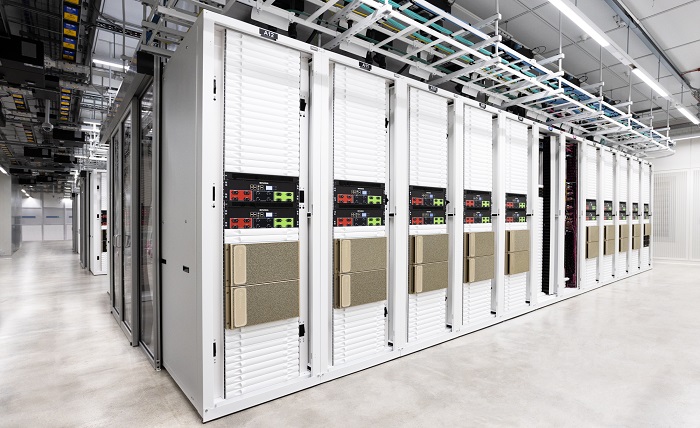
In the digital age, computer networks have become the backbone of modern society, facilitating seamless communication and information exchange. From the internet that connects people globally to local area networks in our homes and offices, computer networks have revolutionized the way we interact, work, and access information. In this article, we will delve into the fascinating world of computer networks, exploring their technology, applications, and the impact they have on our daily lives.
What are Computer Networks?
Computer networks are intricate systems of interconnected devices that enable the sharing and transfer of data and resources. These devices, ranging from computers and smartphones to servers and routers, communicate with each other using a variety of technologies, such as wired or wireless connections.
Types of Computer Networks:
Local Area Networks (LANs): LANs are networks that span a relatively small area, such as homes, offices, or campuses. They facilitate the sharing of resources and data among devices within a limited geographical area.
Wide Area Networks (WANs): WANs cover larger geographic areas, connecting multiple LANs or devices across different locations. The internet itself is a prime example of a global wide area network.
Wireless Networks: Wireless networks, often based on Wi-Fi technology, allow devices to connect and communicate without physical cables. They have transformed how we access the internet and enabled mobility in our daily lives.
Key Components of Computer Networks:
- Routers: Routers are essential for connecting different networks and directing data packets efficiently. They analyze destination addresses and determine the most appropriate path for data transmission.
- Switches: Switches facilitate communication within a network by directing data packets between devices. They create multiple paths for data transfer, optimizing network efficiency.
- Modems: Modems serve as the interface between networks, converting digital signals from devices into analog signals that can be transmitted over communication channels like telephone lines or cable connections.
Network Protocols: Network protocols are a set of rules and conventions that govern data communication within a network. Common protocols include TCP/IP (Transmission Control Protocol/Internet Protocol), which forms the basis of internet communication, and HTTP (Hypertext Transfer Protocol), which enables web browsing.
Network Security
Ensuring the security of computer networks is paramount in today’s interconnected world. Firewalls, encryption techniques, and intrusion detection systems are among the tools employed to protect networks from unauthorized access, data breaches, and malicious attacks.
Applications and Impact:
Internet:
The internet has transformed every aspect of our lives, from communication and entertainment to commerce and education. Its vast network of interconnected computers enables instant access to information, global collaboration, and the proliferation of online services.
Cloud Computing:
Computer networks have paved the way for cloud computing, allowing individuals and organizations to store and access data and applications remotely. This scalable and flexible technology has revolutionized data management, collaboration, and the deployment of software services.
Internet of Things (IoT):
The IoT leverages computer networks to connect and control various devices, from smart home appliances to industrial sensors. This interconnectedness enables automation, real-time data analysis, and the development of smart cities and industries.
Evolving Network Technologies:
Ethernet:
Ethernet technology revolutionized local area networks by providing a standardized method for devices to communicate over a shared medium. It offers high-speed data transmission and has evolved to support various data rates, from 10 Mbps to multi-gigabit speeds.
Wireless Technologies:
Wi-Fi 6 and Wi-Fi 6E: The emergence of Wi-Fi 6 (802.11ax) and Wi-Fi 6E has brought significant advancements in wireless networks. These technologies offer higher data rates, improved capacity, reduced latency, and enhanced efficiency, catering to the increasing demand for faster and more reliable wireless connectivity.
5G Networks: The deployment of 5G networks promises ultra-fast speeds, low latency, and massive connectivity. With the potential to revolutionize industries such as autonomous vehicles, healthcare, and smart cities, 5G networks will unlock new possibilities in terms of bandwidth-intensive applications and real-time communication.
Software-Defined Networking (SDN): SDN separates the control plane from the data plane in network architectures, enabling centralized network management and programmability. It enhances network flexibility, scalability, and security, making it easier to deploy and manage complex networks.
Virtual Private Networks (VPNs): VPNs provide secure remote access to private networks over public networks like the internet. They establish encrypted tunnels, ensuring privacy and confidentiality, and allowing individuals and organizations to access network resources securely from anywhere.
Software-Defined Wide Area Networks (SD-WAN): SD-WAN technology simplifies the management and operation of wide area networks by utilizing software-defined approaches. It allows organizations to optimize network traffic, enhance application performance, and reduce costs by leveraging multiple network connections and cloud-based resources.
Network Function Virtualization (NFV): NFV involves virtualizing network services, such as firewalls, load balancers, and routers, to run on standard hardware instead of dedicated appliances. It offers scalability, flexibility, and cost savings, as network functions can be deployed and scaled as virtual instances as needed.
Future Trends:
Edge Computing:
Edge computing brings processing and data storage closer to the devices and users, reducing latency and enabling real-time analysis. It will be crucial for supporting emerging technologies like autonomous vehicles, augmented reality, and the Internet of Things (IoT).
Quantum Networking:
Quantum networking explores the use of quantum principles to enhance network security, communication speed, and capacity. It holds the potential for unbreakable encryption, ultra-secure communication channels, and quantum computing advancements.
Artificial Intelligence in Network Management:
Artificial intelligence (AI) and machine learning (ML) are being leveraged to optimize network performance, automate troubleshooting, and detect anomalies. These technologies can improve network efficiency, predict and prevent network failures, and provide intelligent insights for network administrators.
Conclusion:
Computer networks continue to evolve and shape our interconnected world. With advancements in technology, we can expect faster and more reliable networks, increased security measures, and innovative applications that will transform industries and revolutionize our daily lives. By understanding the complexities and staying updated on the latest trends, we can fully harness the power of computer networks and unlock new frontiers of connectivity and collaboration in the future.




